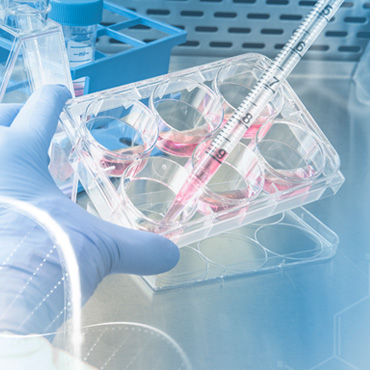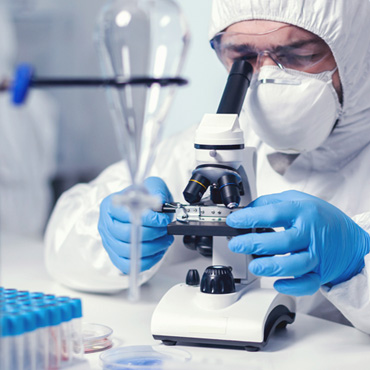Regenerative medicine is an interdisciplinary field that combines biology, medicine, and engineering to restore or replace damaged tissues and organs in the human body. It aims to harness the body's own healing mechanisms and promote tissue regeneration to treat various diseases, injuries, and congenital disorders. By utilizing advanced techniques, such as stem cell therapy, tissue engineering, and biomaterials, regenerative medicine offers the potential to revolutionize healthcare by providing innovative treatment options.
One of the key components of regenerative medicine is stem cell therapy. Stem cells are unique cells in the body that have the ability to self-renew and differentiate into various cell types. They can be obtained from different sources, including embryonic tissues, adult tissues, and induced pluripotent stem cells (iPSCs). Stem cell therapy involves the transplantation of these cells into the patient's body to replace or repair damaged tissues. The transplanted stem cells can differentiate into the specific cell types required for regeneration, such as neurons, heart cells, or liver cells, depending on the targeted tissue.
Tissue engineering is another vital aspect of regenerative medicine. It involves the creation of functional three-dimensional tissues or organs in the laboratory. This is achieved by combining cells with biomaterials, growth factors, and other supportive components to mimic the structure and function of native tissues. Tissue engineering techniques allow researchers to create artificial tissues that can be used for transplantation or as models for drug testing and disease research. For example, in the case of severe burns, tissue-engineered skin grafts can be developed and transplanted onto the patient's wound to promote healing and regeneration.
Biomaterials play a crucial role in regenerative medicine by providing structural support and bioactive cues for tissue regeneration. These materials can be natural or synthetic and are designed to be biocompatible, biodegradable, and promote cell growth and tissue formation. Biomaterials can be used to deliver cells, growth factors, and drugs to the targeted site, providing a conducive environment for tissue regeneration. They can also act as scaffolds for tissue engineering, providing a framework for cells to grow and organize into functional tissues.
Regenerative medicine has the potential to impact a wide range of medical conditions. For example, it can be used to treat degenerative diseases such as Parkinson's disease, Alzheimer's disease, and osteoarthritis by replacing damaged neurons or cartilage. In the case of heart disease, regenerative medicine approaches aim to repair damaged heart tissue caused by heart attacks or heart failure. This can involve injecting stem cells or tissue-engineered cardiac patches to regenerate functional heart muscle. Additionally, regenerative medicine holds promise for treating spinal cord injuries, diabetes, liver diseases, and many other conditions.
In the context of the end patient, regenerative medicine offers several potential benefits.
1st: It provides the possibility of treating diseases and injuries that were previously considered incurable or difficult to manage. It offers the potential to restore normal tissue function, rather than simply managing symptoms.
2nd: Regenerative medicine approaches can potentially reduce the need for organ transplantation, which is often limited by the scarcity of donor organs and the risk of organ rejection. By utilizing stem cells and tissue engineering techniques, damaged organs can be repaired or replaced, reducing the dependence on organ donors.
3rd: Regenerative medicine approaches have the potential to minimize long-term healthcare costs by providing curative treatments that reduce the need for ongoing medication and interventions.
General overview of how stem cells work in regenerative medicine:
a) Sourcing Stem Cells: Stem cells can be obtained from different sources, including embryonic stem cells (derived from early-stage embryos), adult stem cells (found in various tissues of the body), and induced pluripotent stem cells (iPSCs) (reprogrammed adult cells to a stem cell-like state). Each source has its advantages and limitations.
b) Expansion and cultivation: Once isolated, stem cells are cultured and expanded in the laboratory to obtain a sufficient number of cells for transplantation or further differentiation. This process ensures an abundant supply of stem cells for therapeutic use. c) Differentiation: Stem cells have the remarkable ability to differentiate into specialized cell types. In regenerative medicine, stem cells can be directed to differentiate into specific cell lineages depending on the desired therapeutic goal. For example, neural stem cells can differentiate into neurons, astrocytes, or oligodendrocytes for the treatment of neurological disorders.
d) Transplantation: After the stem cells have been differentiated into the desired cell type, they can be transplanted into the patient’s body. Depending on the specific condition and target tissue, stem cells can be delivered through various routes, including injection, infusion, or surgical implantation.
e) Integration and tissue repair: Once transplanted, stem cells can integrate into the damaged tissue or organ. They can replace or repair the damaged cells and promote tissue regeneration through various mechanisms. These mechanisms include releasing growth factors, stimulating the production of new blood vessels, modulating the immune response, and providing structural support to the damaged area.
f) Monitoring and follow-up:
Patients undergoing stem cell-based regenerative therapies are typically closely monitored to assess the treatment’s effectiveness and safety. Follow-up evaluations may include imaging techniques, functional assessments, and biochemical analyses to track the progress of tissue repair and ensure the absence of adverse effects..




